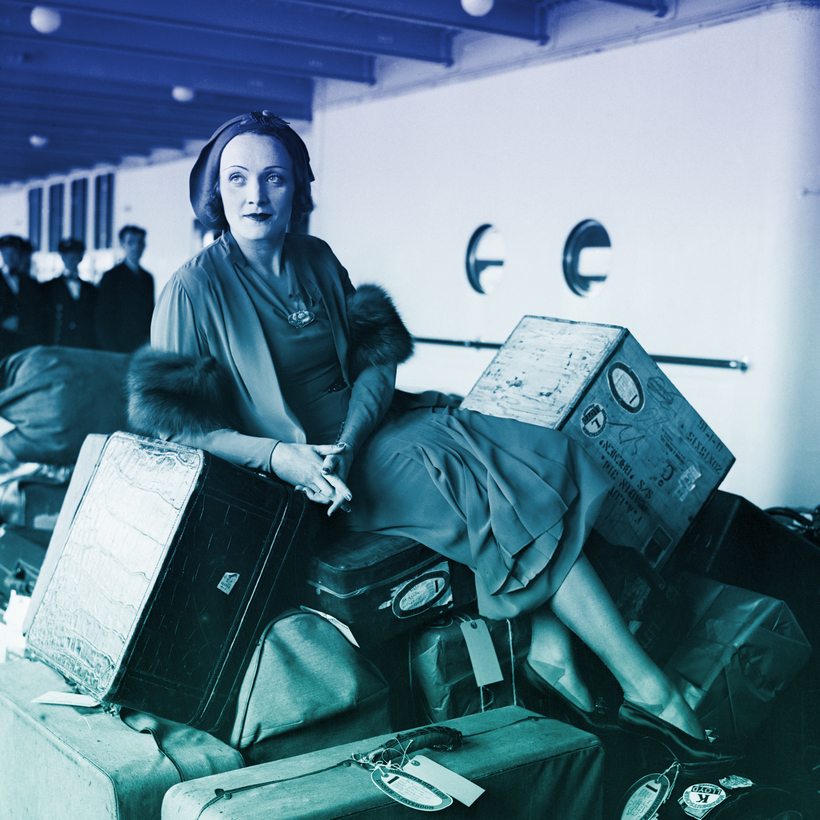It’s hard to fathom that, before the 1950s, the tens of millions of immigrants, the millions of soldiers, and the numberless other travelers between Europe and the Americas could cross the Atlantic only one way: by ship.
From the Age of Sail through the Victorian era of experimentation with steam propulsion and iron cladding, voyages were always long and uncomfortable, even harrowing, for all classes of traveler. In the 20th century, the great ocean liners hove onto the waves, leviathans with towering funnels that plied the sea at ever faster speeds, offering crossings in conditions ranging from grimly tolerable to fabulously luxurious for thousands of passengers on each voyage.
Those passengers included women and children who, by custom and by law, required female attendants on board, hired by the shipping companies to see to their needs. In Maiden Voyages, Siân Evans tells stories of the women who made the crossing and those who took care of them from embarkation on one continent to docking on another.
“The Unsinkable Stewardess”
The career of an ocean-going stewardess is told best through the life of Violet Jessop, who joined the White Star Line in 1911. She survived both the sinking of the Titanic and that of its sister ship, the Brittanic, a World War I casualty.
Known as “the unsinkable stewardess,” Jessop exemplified the strenuous life of meeting ladies’ most intimate needs: clearing slops, helping with dressing, serving meals, cleaning cabins, tending to the seasick—all in close quarters, while keeping amorous fellow crewmen at bay. Jessop’s small salary, sometimes augmented by tips, supported her struggling family at home.

Edith Sowerbutts had a different sort of assignment at sea. During the 1920s, she was a conductress, a chaperone responsible for the welfare of unaccompanied children and young women sailing to new lives in Canada. Edith handled everything from de-lousing babies to filing immigration paperwork, protecting her young charges from any predatory men she spotted on board, and making sure that girls recruited for domestic service in Canada left port for the correct destinations.
Despite two world wars and the Depression in between, jobs at sea for women only got more numerous. Lady passengers required services and entertainment outside the confines of their cabins. Seamstresses, masseuses, bath attendants, hairdressers, and swimming instructresses found work on board.
Ship doctors needed qualified nurses, while expanded shipboard childcare facilities meant work for nursery nurses. Increasingly, women filled stenography and switchboard jobs.
Seamstresses, masseuses, bath attendants, hairdressers, and swimming instructresses found work on board.
Evans also tells the stories of the women passengers, focusing on such upper-deck celebrities as Tallulah Bankhead, Nancy Astor, and Elsa Maxwell. Hedy Lamarr and Josephine Baker triumph on both sides of the Atlantic. Mary Anne MacLeod, daughter of poor Scottish farmers, crosses in steerage to give America her son, Donald Trump.
The growing ease of transatlantic travel contributes to all those stories, but they really unfold on dry land. The voyage is never the crux of any of the celebrity tales. Better, perhaps, to have told us more about the blackmailers, the smugglers, and the mail-order brides among the female passengers.
Broadening her focus along the way, Evans writes entertainingly of corporate competition and improvements in ship design, describing grand and grandiose decoration in gratifying detail. We see the rise of pleasure cruising as a vacation and watch Prohibition drive the “booze cruise” outside American waters.
Like the best salty yarns, Maiden Voyages splices together intriguing personalities in extraordinary settings sailing through dramatic times, a tale well worth the fare.
Robin Olson is a Los Angeles–based writer and editor

